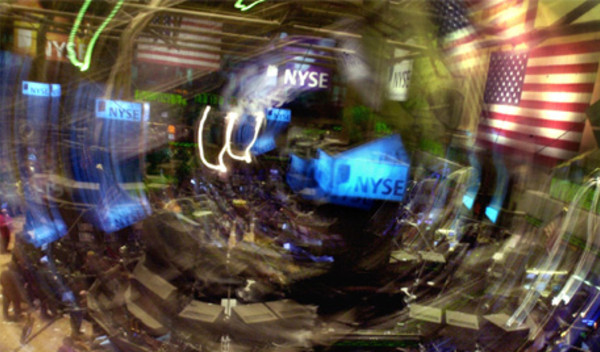

It could be the title of a Sherlock Holmes novel – the Hound of Hounslow describes how one man and his algorithm in west London allegedly managed to (temporarily) wipe billions off the value of the US stockmarket in minutes.
Welcome to the age of high-frequency trading.
High-frequency trading, also known as HFT, is the science of market trading by highly sophisticated battling computers. Powerful supercomputers using complex algorithms analyse multiple market conditions and transact a very large number of orders at lightning-fast speeds.
It takes a computer about 10 microseconds to complete a transaction. If you were operating at that speed at the supermarket self-checkout, you could buy a lifetime’s worth of groceries in under a second (to the jangle of ‘please place the items in the bagging area’).
The impact this technological wave has had on financial markets is nothing short of phenomenal. Most trades now originate from lines of computer code; high-frequency trading is estimated to create 73 per cent of all equity order volumes.
In 1940 the average holding time of a stock was around seven years, but today it is about 22 seconds. That puts a whole new meaning to market short-termism.
Speed and automation have their uses – some good, some less so.
An investor with a large holding to sell, for example, would be ill-advised to dump all of their shares in one go. Instead, they might use an algorithm to drip-feed that sell order into the market.
Shrewder algorithms are attentive to the volume of other trades in the market, which can change throughout the day. In this way, the computers can sell when there are a lot of buyers.
Proponents of high frequency trading say it improves liquidity, lowers transaction costs, and does not pose a systemic risk. But the abuses of high frequency are well documented.
Algorithms that have a 30-millisecond advantage can know before other market participants when an order is about to hit the books, and profit from that knowledge. This is known as ‘front running’.
There is a huge silent arms race among the world’s prominent HFT firms: the rewards for the quickest trades are huge.
Meanwhile the exchanges, rather than removing this unfair advantage, instead get paid to allow firms to put their trading servers inside their exchanges to gain speed advantages.
Next, enter the Hound of Hounslow. Or, to use his real name, Navinder Singh Sarao.
In May 2010, Mr Sarao allegedly created $200m (£131.4m) of fake sell orders, which were cancelled before execution, to dupe other computer algorithms to sell for real: this was, prosecutors claim, one of the causes of the ‘Flash Crash of 2010’.
The market dropped 6 per cent and recovered in the space of half an hour. Mr Sarao’s robots bought at the much lower price and made their creator a tidy fortune.
This is not, alas, an isolated case: last summer a US firm was fined for sending 10,000 orders per second to the exchanges with few or no executions.
Ultimately, markets allow companies to raise finance and investors to allocate capital efficiently. There are clear advantages to high-frequency trading, though the risks it introduces must be tempered to ensure markets can continue to fulfil their primary purposes.
A parallel is the car. A fantastic invention, but sensible rules are necessary to prevent too many people getting hurt.
Mr Sarao continues to fight extradition to the US. The case continues.
Jim Wood-Smith is head of research at Hawksmoor Investment Management



